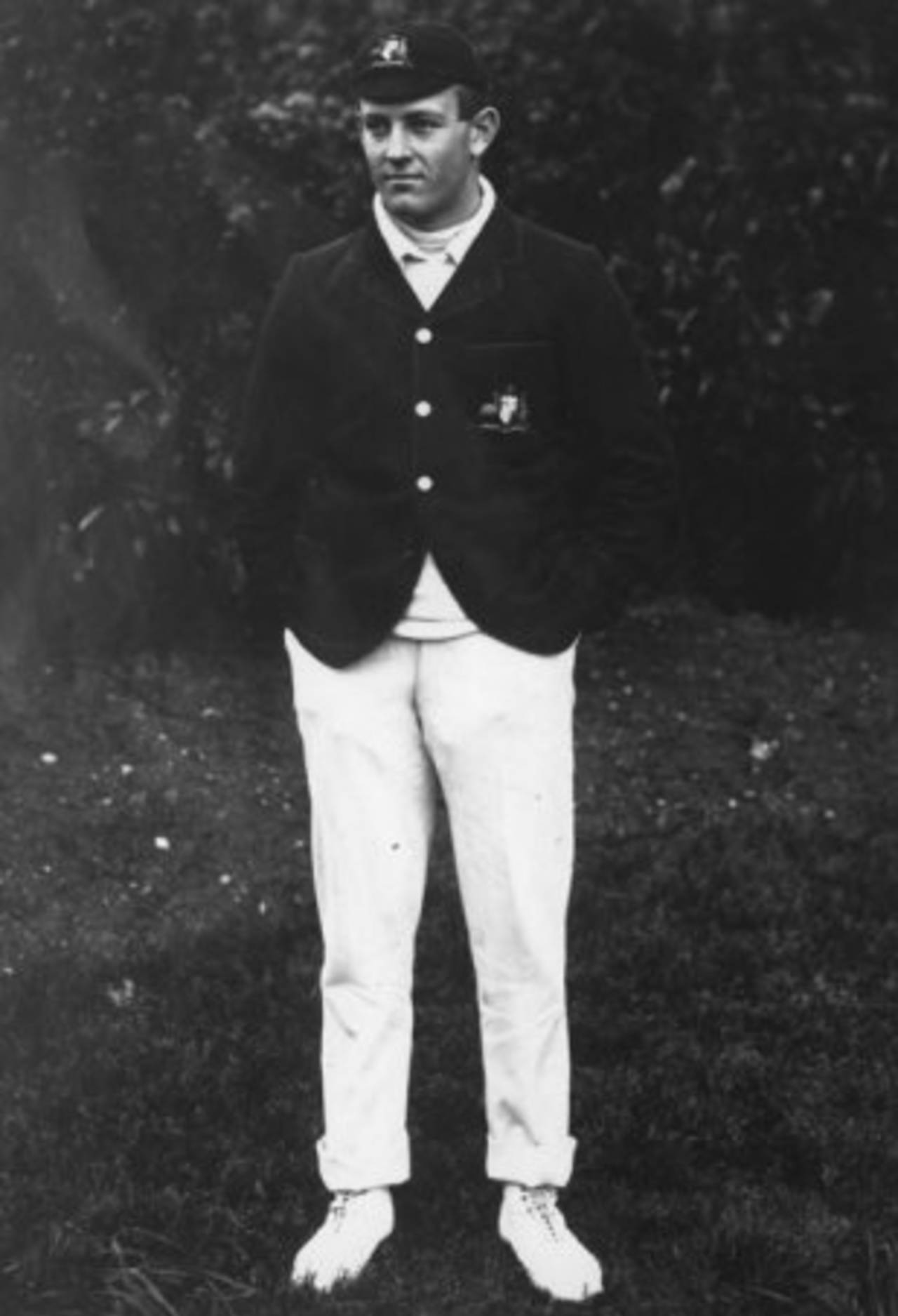Seven wicket-takers in an innings, and trans-Tasman travellers
Also: rugby siblings, a First World War victim, longest gaps between first-class and Test debuts, and a foreword written by a dog

Tibby Cotter died in Palestine during the First World War • Getty Images
That was in the group stage of the previous World Twenty20, in Bridgetown in May 2010 - the seven West Indian bowlers tried all took a wicket (Kemar Roach collected two), and there was also a run-out, as India reached 155 for 9, chasing 170 to win. There is only one other instance of seven different bowlers taking a wicket in the same T20 international innings, when Zimbabwe bowled Bangladesh out for 166 in Khulna in November 2006 - Prosper Utseya took three wickets, Gary Brent two, and five others one each - although it wasn't enough for victory, as Zimbabwe's batsmen managed only 123. Five Bangladeshis took a wicket, and the overall aggregate of 12 is a T20I record. When Scotland played Namibia in Windhoek in October 2011, they also used seven bowlers, all of whom, neatly, took one wicket - but that doesn't count as a full international, as Namibia don't have that status.
No one has yet played official internationals for Australia and New Zealand. The nearest is probably the old legspinner Clarrie Grimmett, who was born in Dunedin and played for Wellington against an Australian touring team in 1913-14, although he didn't feature in the representative matches on that tour (they weren't Tests, as New Zealand were still 16 years away from achieving that status). Grimmett later moved to Australia and, after making his debut for them aged 33 in 1924-25, became the first man to take 200 Test wickets, finishing with 216. More recently Brendon Julian, who was also born in New Zealand, played seven Tests for Australia; the only other man to do this was Tom Groube (born in Taranaki n 1857), who represented Australia in the first Test ever played in England, at The Oval in 1880. Recent New Zealand players who were born in Australia include Dean Brownlie (Perth), Mathew Sinclair (Katherine, Northern Districts) and Scott Styris (Brisbane). Luke Ronchi, who was born in Dannevirke in New Zealand, played four one-day internationals for Australia in 2008 (and three T20 internationals too).
My first thought was that it might be the Yorkshire and England fast bowler Chris Old, whose brother Alan played rugby for England (they once featured in internationals on the same day in 1974, which must have been confusing for their families). But espnscrum.com tells me that Alan Old never captained England. I think the answer is Victor Olonga - the brother of fast bowler Henry - who played 14 rugby internationals for Zimbabwe between 1993 and 1998, captaining in some of them. He scored tries in successive matches against Wales in 1993.
This melancholy fate befell the tearaway fast bowler Albert "Tibby" Cotter, who was killed in Palestine in 1917 - shot by a sniper after apparently after peeping out of his trench to see what was happening on the battlefield. Cotter, who was 33, had taken 89 wickets in 21 Tests after making his debut in February 1904. A shortish man who generated high pace from a slinging action, Cotter took 6 for 40 in only his second Test, against England in Melbourne in March 1904, and 7 for 148 at The Oval the following year.
Tony Lewis made his first-class debut for Glamorgan in August 1955, a month after turning 17. And, despite some near-misses, his first Test didn't come until more than 15 years later - as captain in India in 1972-73 - in what was his 377th first-class appearance. Surprisingly, perhaps, this puts him only sixth on that particular list, which contains two men who played more than 400 games before winning a Test cap. Joe Vine, a batsman who bowled some legspin, made his Test debut in Melbourne in 1911-12, in what was his 404th first-class match: almost all the others were for Sussex, for whom he played 423 games in a row without missing a single one. But the record holder in this regard is the Leicestershire allrounder Ewart Astill, who had played 423 first-class matches before his Test debut, in South Africa in 1927-28. He was nearly 40, and had made his first-class debut more than 21 years previously. The others to have played more than Lewis before winning their first Test caps are the West Indian opener Ron Headley (391 matches), and the England pair of Ian Thomson (384) and Reg Sinfield (381).
This unorthodox start to a very unorthodox book was in the autobiography of the Yorkshire and England fast bowler (and now Leicestershire captain) Matthew Hoggard, whose 2009 book Hoggy: Welcome to my World featured a "paw-word" by the "Hoggy doggies", Billy the doberman and Mollie the border collie.
Steven Lynch is the editor of the Wisden Guide to International Cricket 2012. Ask Steven is now on Facebook